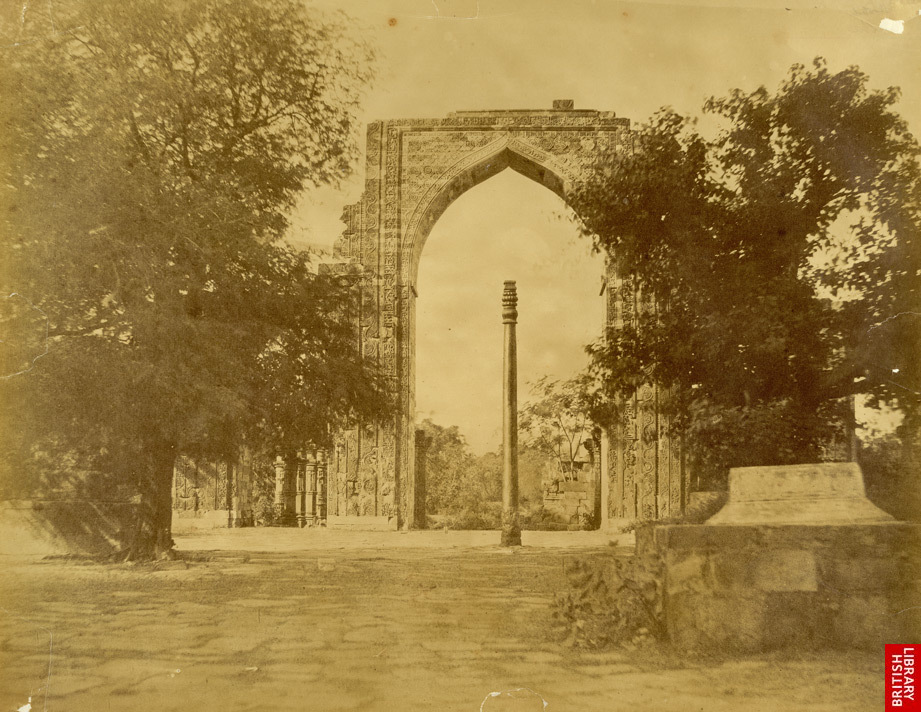

*The
Kootub [Delhi], a photo by Robert and Harriet Tytler, 1858*
(BL);
also: *The
Kootub [Delhi]* [*Tytlers 1858b*]
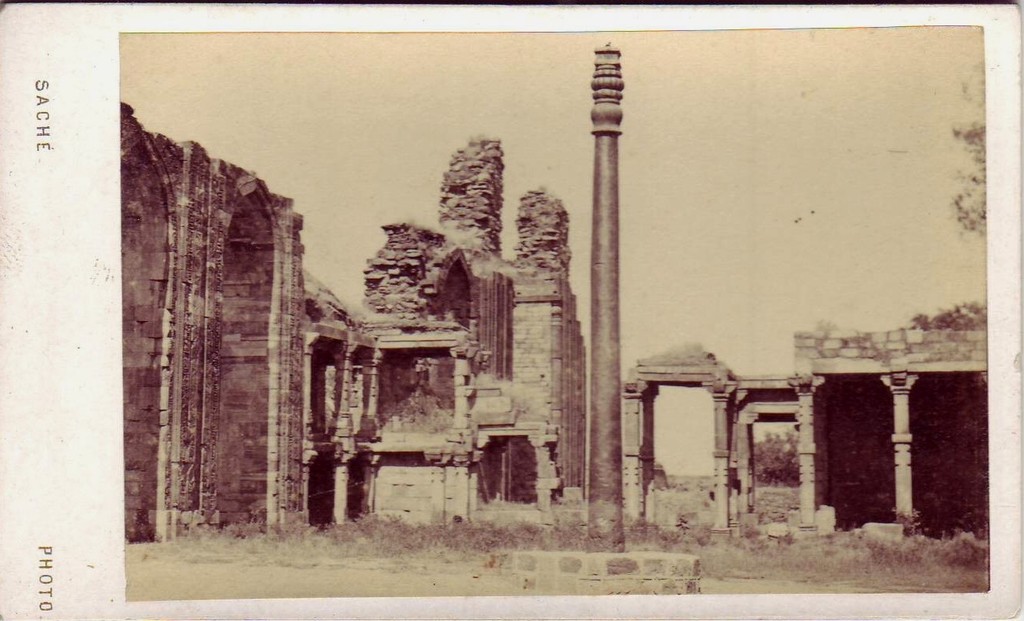
A photo by Sache, c.1870's; and *another photo by Sache, c.1880's*
Source: ebay, Mar. 2008
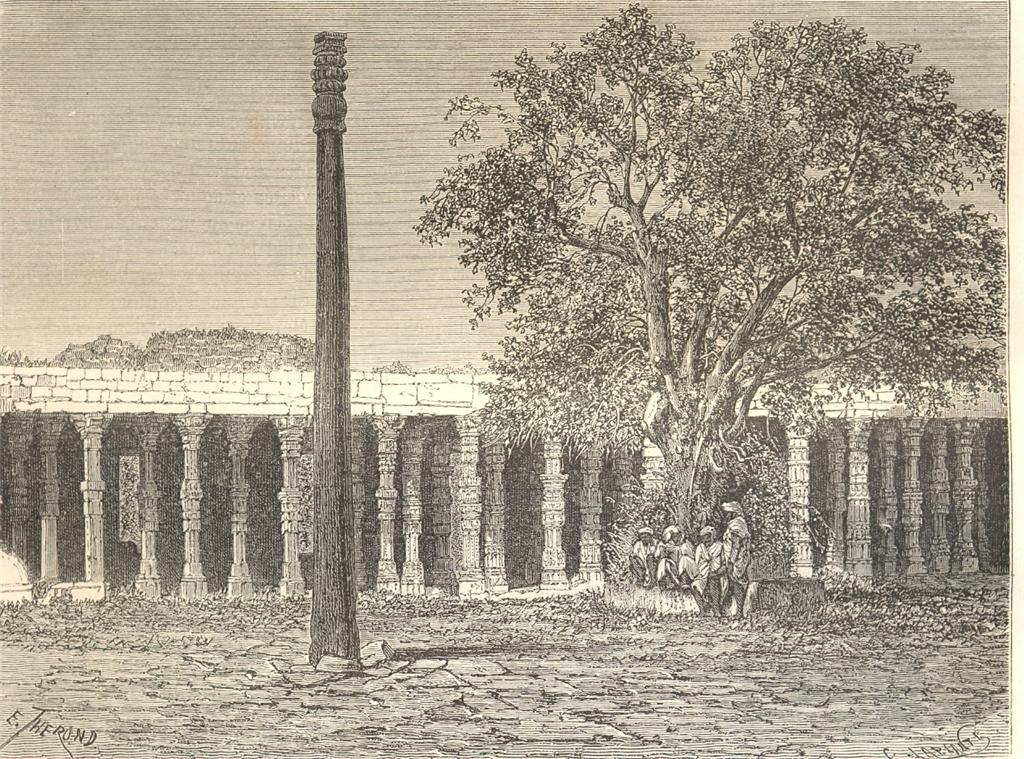
An engraving by E. Therond, from a French magazine, 'Le Tour du Monde', 1874; *a very large scan of this engraving*
Source: ebay, Feb. 2008
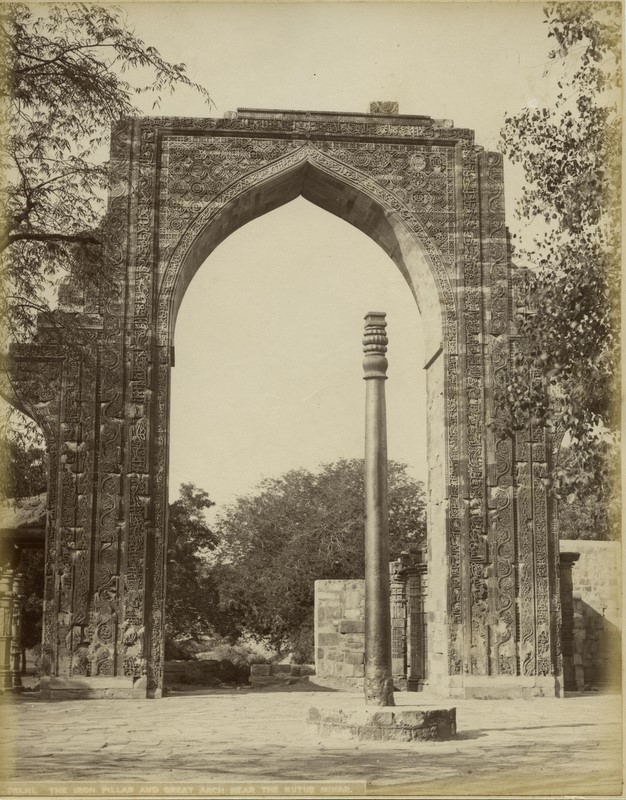
An albumen print attributed to Taurines, 1880's
Source: ebay, Oct. 2007
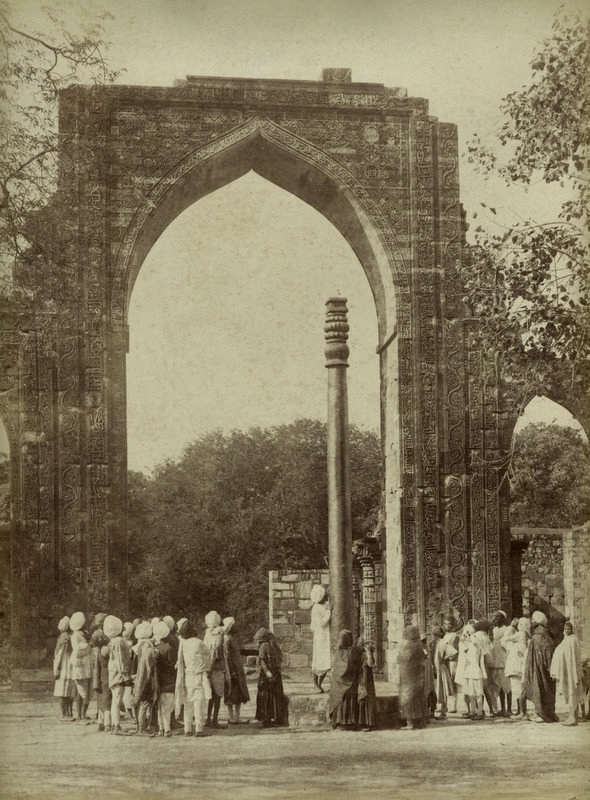
*Another early photo, probably from the 1880's*
Source: ebay, Apr. 2007
Source: ebay, Oct. 2005
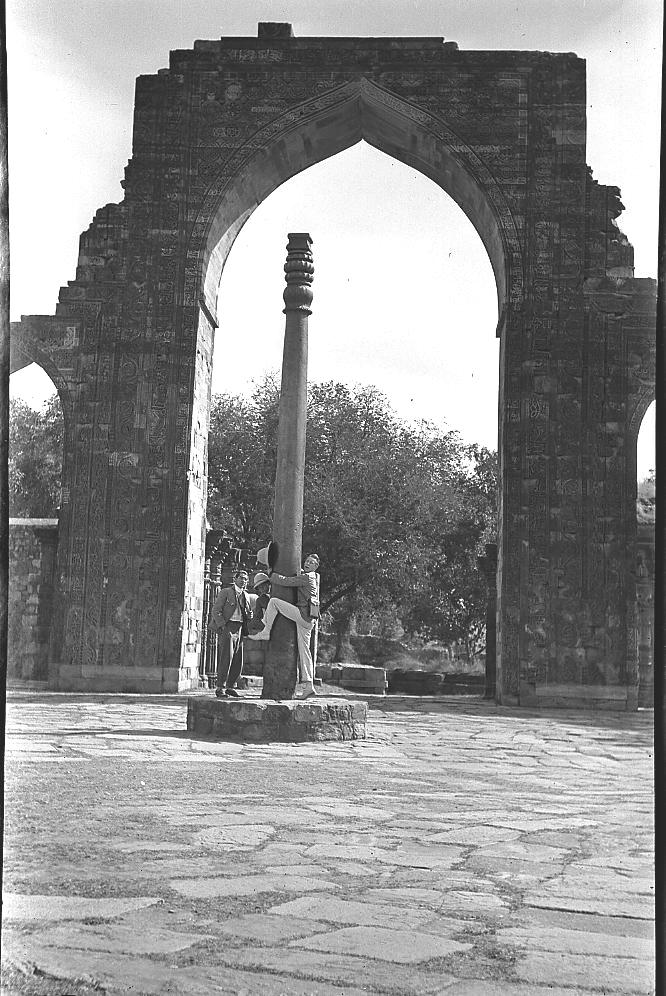
Source: ebay, July 2006

The Iron Pillar in relation to the screen and the mosque courtyard
Source: Courtesy of Prof. Frederick Asher, Univ. of Minnesota, October 1999
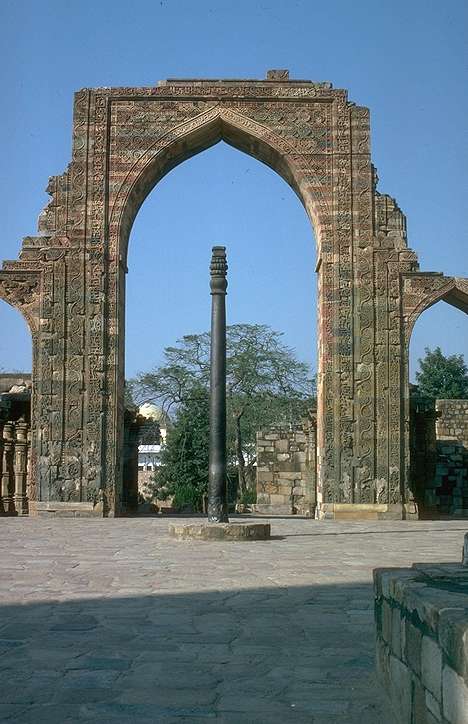
Another look at the famous Iron Pillar
Source:
http://www.bergerfoundation.ch/wat4/museum1?museum=Dehli&genre=Islam&cd=8033-3191-4272&country=Inde&col=pays
[Delhi, Quvvat, section 1 (of one), page 1, image 1]
(downloaded April 2000)
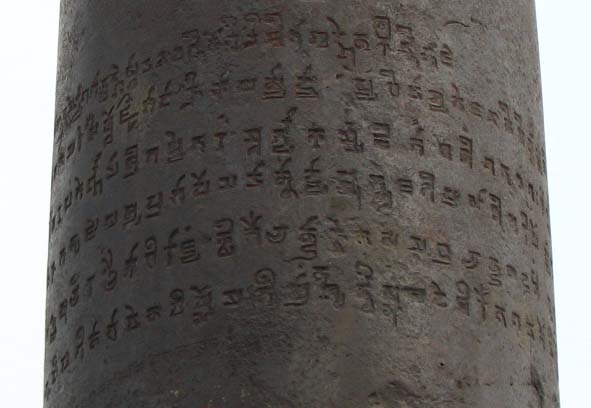
A look at the inscription on the iron pillar
Source: Courtesy of Rob McNamee, Columbia College, Jan. 2005
Source: http://www.the-week.com/21jun24/cover.htm
(downloaded June 2001)
[author not identified]
Pillar of strengthThe rustless wonder called the Iron Pillar near the Qutb Minar at Mehrauli in Delhi did not attract the attention of scientists till the second quarter of the 19th century.
The first reports of the pillar were by British soldiers, and Captain Archer talked about its inscription of 'unknown antiquity which nobody can read'. James Prinsep, an Indian antiquarian, deciphered the inscription in 1838 and translated it into English in the Journal of the Asiatic Society of Bengal.
Scholars consider the pillar to be of early Gupta period (320-495 AD) on grounds of palaeography, content and language of the inscription and the style of execution. But there are differences in opinion over whether the king referred to in the inscription as Chandra is Samudragupta (340-375) or his son Chandragupta II (375-415). The pillar was perhaps a standard for supporting an image of Garuda, the bird carrier of Lord Vishnu.
The inscription refers to a ruler named Chandra, who had conquered the Vangas and Vahlikas, and the breeze of whose valour still perfumed the southern ocean. "The king who answers the description is none but Samudragupta, the real founder of the Gupta empire," said Prof. T.R. Anantharaman, who has authored The Rustless Wonder, a monograph published by Vigyan Prasar.
The excellent state of preservation of the Iron Pillar, near the Qutb Minar at Mehrauli in Delhi, despite exposure for 15 centuries to the elements, has amazed corrosion technologists. In particular, metallurgist Prof. T.R. Anantharaman, who has authored The Rustless Wonder.
In 1961, the pillar (23 feet and 8 inches, and 6 tonnes) was dug out for chemical treatment and preservation and reinstalled by embedding the underground part in a masonry pedestal. Chemical analyses have indicated that the pillar was astonishingly pure or low in carbon compared with modern commercial iron.
In 1963, M.K. Ghosh of the National Metallurgical Laboratory concluded that the pillar had been very effectively forge-welded. B.B. Lal, chief chemist at the Archaeological Survey of India, also came to the conclusion that the pillar was not cast, but fabricated by forging and hammer-welding lumps of hot pasty iron, weighing 20 to 30 kg, in a step-by-step process. The surface of the pillar retains marks of hammer blows. It is assumed that 120 labourers took a fortnight to complete this daunting task.
The excellent state of preservation of the Iron Pillar despite exposure for 15 centuries to the elements has amazed corrosion technologists. High phosphorus, low sulphur, low manganese and high slag contents contribute individually and collectively to the good corrosion resistance.
Besides, a protective oxide film, 50 to 600 microns thick, has formed on the pillar. This is less than 50 microns in the bright, polished section where people used to clasp around for luck.
== Indian Routes index == Indian Routes sitemap == Glossary == FWP's main page ==